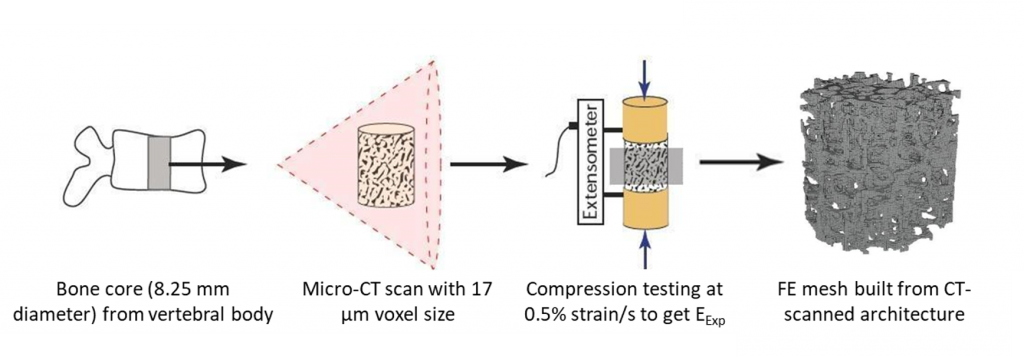Orthopaedic Biomechanics
Developing Computational Tools to Investigate
and Predict Bone Mechanical Behavior
Cancellous bone, otherwise known as trabecular or “spongy” bone, is found inside many bones in the body and is important for load-bearing. Osteoporosis, a condition characterized by a reduction in cancellous bone quantity, is associated with compromised load-bearing capacity of bones and increased risk of fracture. Osteoporosis primarily affects the aging population, and women are disproportionately affected with higher prevalence than men.
Besides cancellous bone quantity, material heterogeneity and architecture influence cancellous bone strength. Finite element models (FEMs) of cancellous bone obtained through non-invasive micro-computed tomography (micro-CT) have demonstrated the capacity to act as a virtual biopsy for investigating cancellous bone strength. Our lab aims to improve on this method by incorporating natural material heterogeneity in FEMs, and to use the refined models to predict the mechanical behavior of human cancellous bone.
Our findings will elucidate the utility of incorporating natural heterogeneity in these models, and will lay the groundwork for non-invasive monitoring of cancellous bone health using virtual bone biopsies. This work has the potential to extend beyond osteoporosis to other conditions which affect bone strength, such as diabetes and obesity.

The FE modeling process
Selected Publications & Presentations
- Cox JM, Smith JD, Cole JH (2020) Micro-finite element models of osteoporotic bone resist changes in performance due to downsampling. Biomedical Engineering Society Annual Meeting, San Diego, CA, Oct 14-17, Submitted.
- Cox JM, Smith JD, van der Meulen MCH, Cole JH (2019) Heterogeneous tissue modulus improved prediction of mechanical behavior in human vertebral cancellous bone. Orthopaedic Research Society Annual Meeting, Phoenix, AZ, Feb 8-11, Poster #1759
